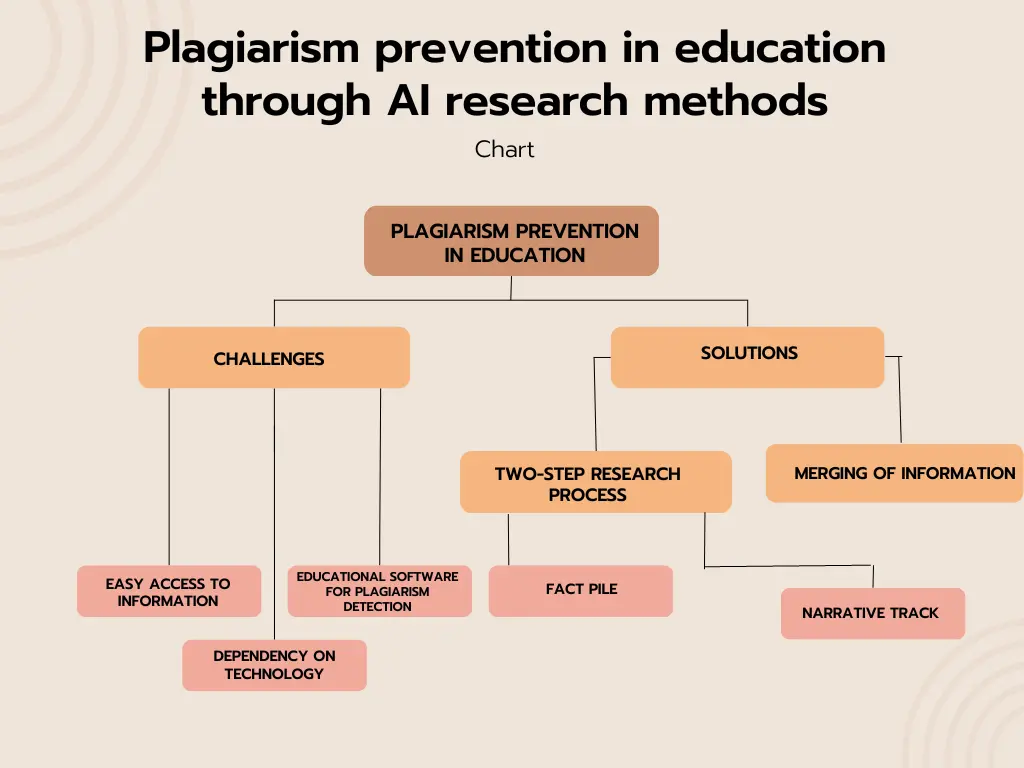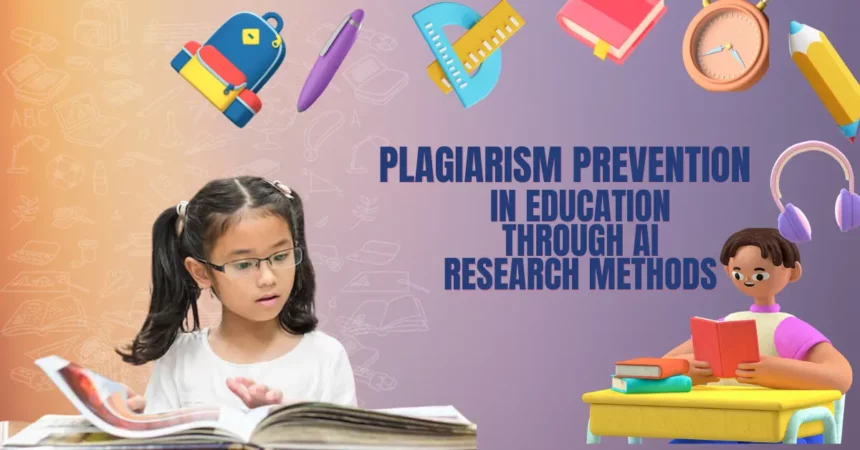The issue of plagiarism prevention in education has become increasingly relevant in today’s digital age. With the widespread availability of information on the internet, students now have easier access to sources to use for their assignments. However, this convenience has also led to increased instances of plagiarism, where students present work as their own that they have taken from others.
We have made a block diagram the diagram depicts the steps in a plagiarism prevention process in education.
It consists of two stages:
- Assembling a “fact pile” with sources
- Writing a narrative track
incorporating the facts and sources. The end result is a chart that demonstrates the student’s original thinking supported by research, thus preventing plagiarism. The goal is to promote critical thinking and responsible use of information.

To address this issue, schools and institutions of higher education have adopted various techniques and tools to detect plagiarism. One of the most popular solutions is educational software that scans student work for similarities to existing sources. However, these technologies can only do so much and need to address the root cause of the problem.
Schools and institutions must focus on educating students on responsible research practices and how to cite their sources accurately. This involves teaching them how to research and gather information from various sources and use it in their own words. Students will be less likely to resort to plagiarism by understanding how to use data appropriately.
Another effective method for preventing plagiarism is encouraging students to adopt a two-step research process. The first step is to gather information and list it in a “fact pile,” which includes helpful information, facts, statistics, quotes, and the source. The second step is to write a narrative track outlining the student’s thoughts and ideas on the topic. Focusing on their original thoughts and ideas makes students less likely to rely on others’ work.
Moreover, using technology such as artificial intelligence (AI) in education has benefits. Still, it also raises concerns about a generation of students who may become dependent on technology and unable to think critically. To prevent this, it is essential to strike a balance between utilising technology to enhance the learning experience and nurturing critical thinking skills in students.
In conclusion, the challenge of plagiarism prevention in education is complex. However, by educating students on responsible research practices and encouraging the development of critical thinking skills, it is possible to create a generation of learners who understand the importance of using information ethically and responsibly.









